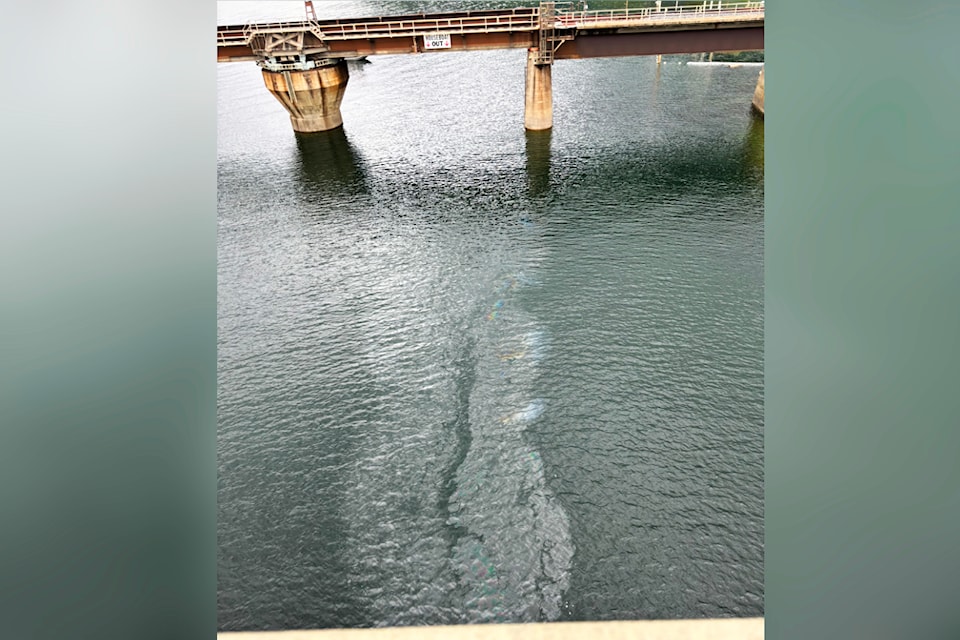Sicamous beaches by Bruhn Bridge remain closed to the public as work continues to mitigate fuel spilled following a fatal collision.
Beaches north of the bridge, including the one at Sicamous' Beach Park, were closed after an Aug. 24 incident where a transport truck broke through the south railing of the Highway 1 bridge and plunged into the channel, resulting in the death of 25-year-old Raminderjeet Singh.
According to B.C.'s environment ministry, about 200 litres of diesel escaped into the water from the submerged truck's fuel tanks, with additional diesel and oil, escaping during recovery of the truck and trailer. Debris from the trailer was also released.
In an Aug. 27 update on the spill, the ministry said booms were set up to capture the diesel and oil, while a vacuum truck was used to remove the sheen from the water.
"The removal of the truck eliminated the threat of further pollution," said the ministry, noting diesel impacts were observed on the nearby beaches.
An Environmental Emergency Response Officer was deployed to the site to oversee the response and mitigation.
According to the U.S. National Oceanic and Atmospheric Association (NOAA), if diesel is released on or very close to shore, on concentrates on catchment beaches, there can be heavy penetration into the sediments.
"In terms of toxicity to water-column organisms, diesel is considered to be one of the most acutely toxic oil types," reads an NOAA fact sheet on small diesel spills (500 to 1,320 litres). Fish, invertebrates and seaweed that come in direct contact with a diesel spill may be killed. However, small spills in open water are so rapidly diluted that fish kills have never been reported."
The ministry said the beaches will remain closed until the diesel is no longer an impact and that sampling is ongoing.




